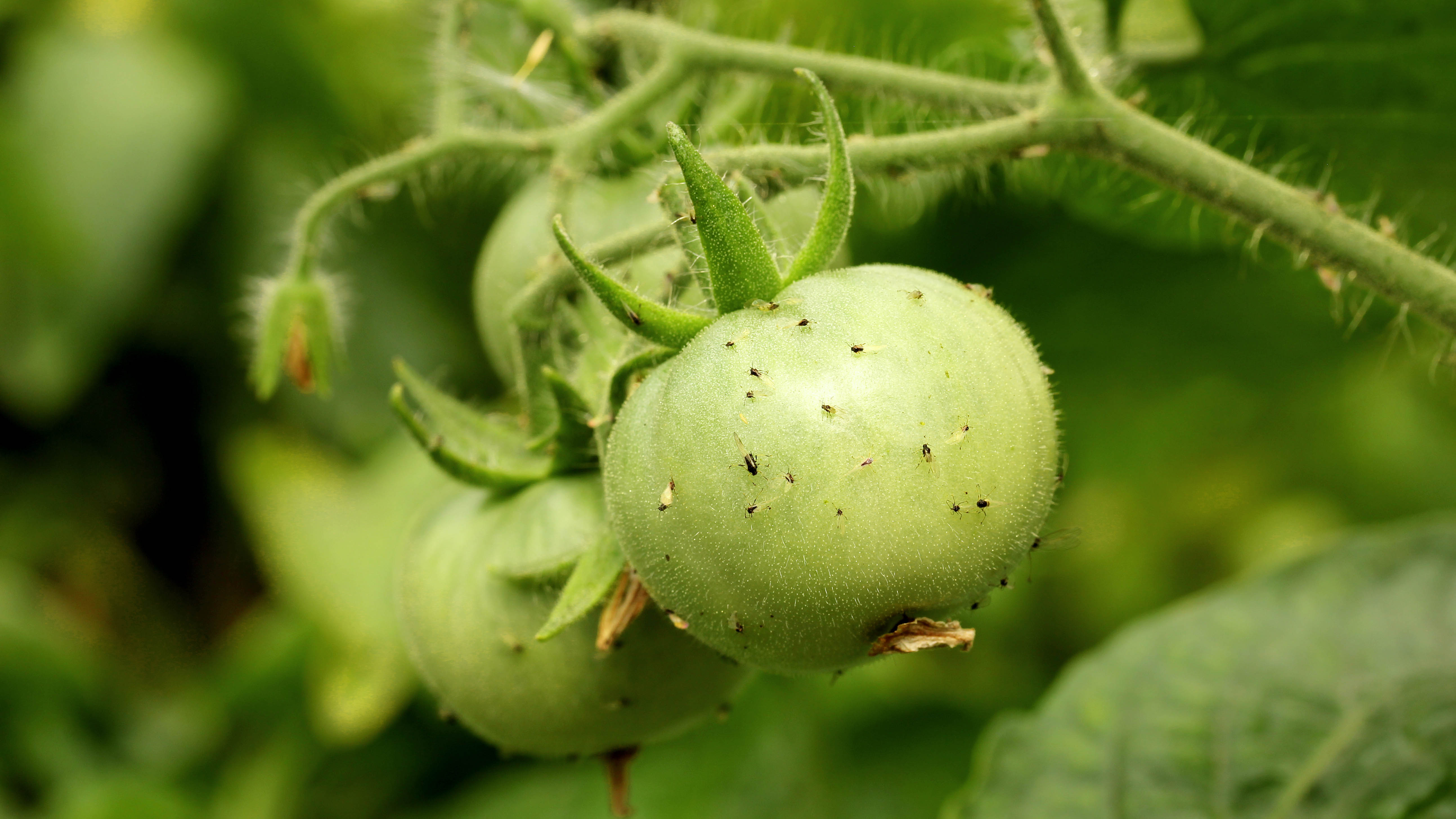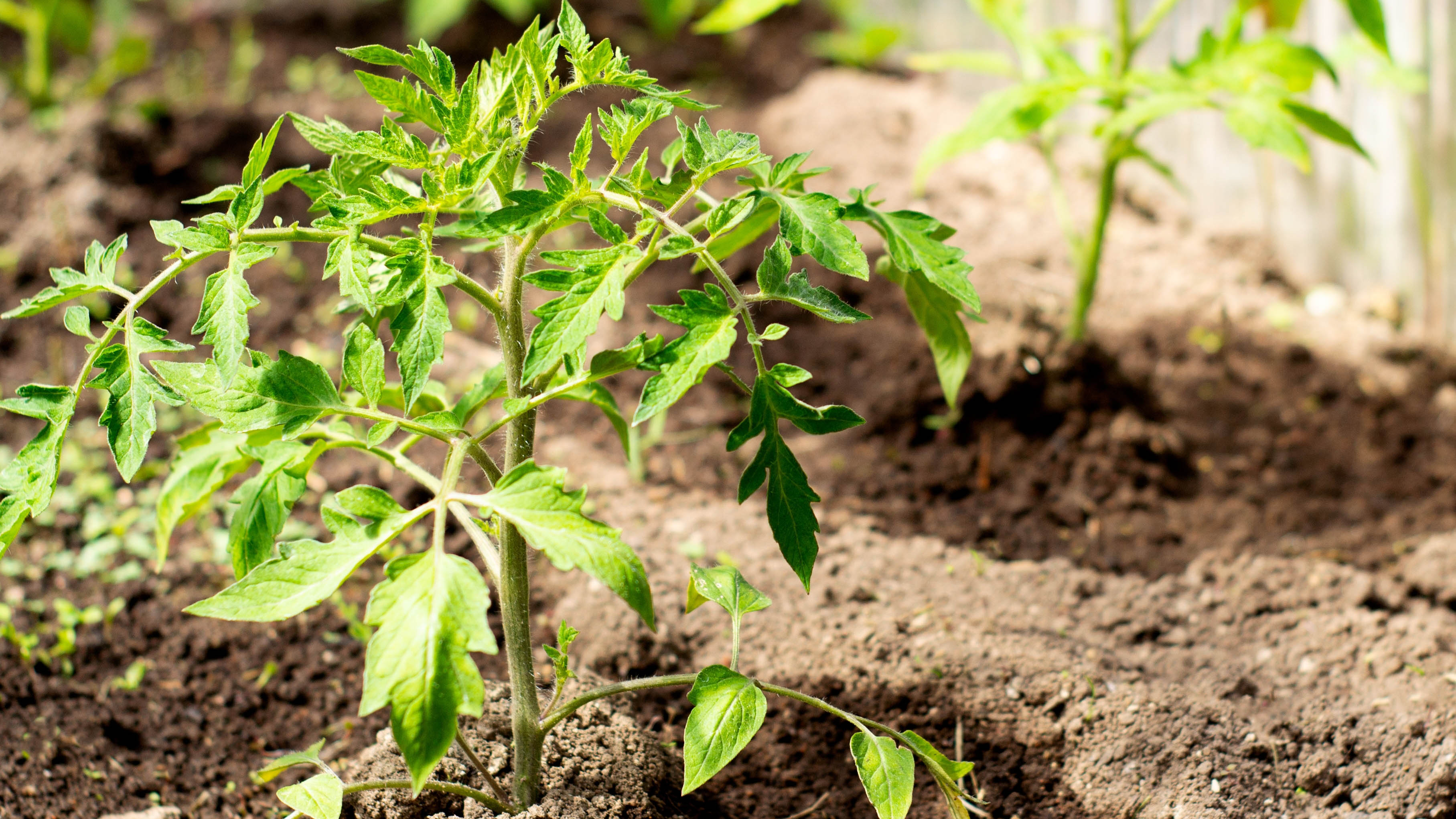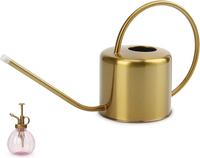7 reasons your tomato plant is wilting — and how to fix it
The solution is easier than you think

Tomatoes are practically synonymous with summertime, which makes them the perfect plant to grow this season. Freshly grown tomatoes tend to be juicier and more flavorful than their store-bought counterparts — and there’s no fresher tomato than the one picked from your own yard.
These plants also tend to be quite easy to grow and produce a lot of fruit for their size, so it’s no surprise that they are a favorite of home gardeners all around the country. If you take care of them correctly throughout the next few months, you’re sure to be rewarded with a bounty of delicious tomatoes. Just look out for one thing: wilting.
A wilting tomato plant is a common sight, as it’s the plant’s main way to show that it needs a little bit more attention. There's a simple 7 mistakes to avoid when growing your own tomatoes but if you notice your tomato plant is starting to droop, don't dismiss it. Wilting occurs for many different reasons but will almost certainly lead to serious damage and even plant death, if the issue remains untreated. The good news is that many of the causes are easily solvable, once you know what’s going wrong.
Here are the seven most likely reasons that your tomato plant is wilting — and what you can do to treat it:
1. Underwatering

Tomatoes are thirsty plants. Although they thrive in the summer months, when the temperatures tend to rise and the weather dries up, tomatoes still need a steady supply of water if they are to thrive. This tends to be between 1-2 inches of water a week, but varies depending on the soil and external climate.
There are several reasons why your current watering schedule may be insufficient, such as the weather being hotter and drier than normal. Another reason could be that you’ve recently moved your plant into a new environment or a new kind of soil, which requires a bit more watering.
You can tell if the wilting is caused by underwatering by looking at the state of the leaves; if they are dry and papery then the plant is likely not getting enough hydration.
Sign up to get the BEST of Tom's Guide direct to your inbox.
Get instant access to breaking news, the hottest reviews, great deals and helpful tips.
What to do:
It may seem obvious that under-watered plants need more water, but be careful not to drown your plant. Instead, use roughly the same amount of water as before but increase the frequency of your watering, so that the tomatoes get a more consistent infusion of water.
Too much water can cause its own issues, as seen below, so it’s important to strike the right balance. One way to check if your plant is ready for more water is to check the soil 1-2 inches below the surface. When this feels dry, it’s time to rewater.
2. Overwatering

It is possible to have too much of a good thing. While overwatered plants may initially look the same as underwatered ones, thanks to their drooping shape, you can inspect the leaves to tell the difference.
Overwatered plants will have thicker leaves, ones that aren’t dry or papery. The soil will also probably look damp and saturated with water, even days after watering, which shows that there is too much moisture in the soil. Overwatering is a problem because it promotes the growth of fungus and larvae, which can lead to damage of the plant’s roots, leaves and stems. Root rot can also kill the plant over time.
What to do:
Consider if there has been a particular change in the weather, such as a rainstorm, which may have impacted your plant. If there is no clear one-off cause, scale back on your watering. Wait to water the tomato plant until you’ve checked the soil and found that the top 1-2 inches are dry. Then, be careful not to saturate the plant with water.
It’s better to water more frequently, allowing the soil to dry out in between, than to pour the entire amount over the plant at once and make the roots sit in drenched soil. As always after changing your maintenance schedule, perform regular checks to make sure this new system is working.
Remiawy Indoor Outdoor Stainless Steel Watering Can: $26 @ Amazon
Watering cans are useful, but they don't have to be boring. With its solid construction, this eye-catching can has a long-stem spout to directly water your outdoor plants or indoor succulents without annoying drips. It also comes with a rounded, comfortable handle to carry and is lightweight at just 1.3 pounds. What’s more, it comes in three, stunning colors including gold, copper and in black to suit any backyard style.
3. Diseases

One of the challenges of tomato plants is that they are susceptible to several different kinds of disease: fungal, viral and bacterial. Tomato Spotted Wilt Virus (TSWV) is one of the most common kinds of disease and shows up as purple or brown spots on leaves, as well as overall wilting.
Then there’s bacterial wilt, which can cause the leaves to turn yellow and wilt but often works too quickly to cause visible symptoms before the plant is dead. Lastly, fungal diseases are usually one of either Verticillium wilt fungus, Fusarium wilt fungus or Southern Blight. These also act quickly, causing wilting and death. Southern Blight can also have a visible appearance of white mold around the base of the plant stem.
What to do:
Unfortunately, none of these diseases are treatable. They may have been lingering in the soil, waiting for an unsuspecting plant to infect, or they may have traveled into the yard by other means. Regardless, the best course of action is to quickly remove and dispose of the infected plant(s) so that the contamination doesn’t spread.
This area should then no longer house tomato plants for at least 2 years, to reduce the risk of any disease remaining in the soil and reinfecting future plants. Instead, plant resistant varieties and maybe practice crop rotation, so that the soil is still put to good use.
When you do plant tomatoes again, space the plants about 3 feet apart so that there is adequate air circulation and less risk of them infecting each other.
4. Root damage

If you’ve been watering your plants properly but they still have the appearance of being underwatered, then your tomato plant might be suffering from root damage. This often occurs when a plant has been transferred from one spot to another, such as from its original potting container into its long-term home.
When removing the plant from its original soil, you may have accidentally broken off some of the roots and left the secondary roots behind. This leaves fewer roots to absorb water and keep the plant supported with sufficient nutrients. As a result, the plant may wilt in those first few days as it adapts to the new normal.
What to do:
The good news is that plants grow new roots all the time, without our intervention. If the plant has lost its secondary roots, it will be working to regrow these immediately and so you just need to give it time to act. Make sure the soil is suitably fed with nutrients and water, then let the plant get to work.
You should start to see improvements in wilting within a few days. If you don’t notice any positive changes, consider a different cause from this list that may be in play.
5. Nearby walnut trees

This might be surprising to you, but black walnut trees produce a toxic chemical called juglone. While it’s harmless to humans, it causes significant damage to solanaceous crops such as tomatoes, eggplant and peppers. The effects look like yellowing, wilted leaves and stunted growth, which will eventually kill your tomato plants.
Your plants don’t need to be right underneath a walnut tree to be affected; the tree’s root cover will reach much further than the leaf canopy and also produce juglone. Rain can also leach juglone from the tree matter and spread it to the surrounding area, extending the damage.
What to do:
The effects of juglone can’t be treated, so any damaged plants will need to be removed and destroyed. For future plants, your options are limited. Juglone comes from all parts of the walnut tree — leaves, roots, branches, nuts — and remains even when the tree is decomposing.
This means that cutting down a walnut tree won’t solve the problem; the decaying roots will still be impacting the surrounding soil. Instead, your only real option is to plant susceptible plants at least 20 feet away from the tree’s drip line or utilize large containers that won’t touch the infected soil. Around the walnut tree, you can plant immune crops like carrots, corn and beans.
6. Heat and sun stress

Extreme environmental factors can place stress on a plant, forcing it to protect itself. Extreme heat can make a tomato plant wilt and curl up its leaves, to reduce the visible surface area and minimize moisture loss. Too much sun can also stress out a plant, especially one that is new to the outside like a young tomato plant that hasn’t been “hardened” to the local environment.
Sun stress also takes the appearance of drooping. Both of these conditions can be quite common during the peak of summer, but usually are short-term in effect.
What to do:
Prepare your tomato plants for any intense weather exposure by “hardening” them, which means placing your plant container outside in the sun for a few hours before you transplant them into outdoor soil. If heat or sun stress has already occurred, then don’t do anything except take regular care of your plant, e.g. regular watering and fertilizing.
The tomato plant should recover on its own if adequately supported — and could actually be harmed more by any attempt to counteract damage, such as overwatering. If your area regularly experiences these extreme conditions, consider shading the area with a cloth or blanket to add sun protection.
7. Over-pruning

Pruning is an important part of tomato plant care. Cutting away some of the younger branches helps to direct the plant’s energy into growing fruit, as opposed to extra leaves. But you have to get the balance just right. Pruning too much can cause stress to the plant, which causes the leaves to wilt and curl up. This is particularly likely if you’ve been pruning back the whole plant, rather than just the suckers between the main and lateral stems. If you notice that your plant is wilting in the days after a pruning session, this is likely the cause.
What to do:
Give your plant a bit of a break and let it recover from the stress. You don’t have to give up pruning altogether, but wait until the plant has bounced back before you begin again. If or when you do decide to prune again, focus on the suckers between main and lateral stems and pinch these off, rather than anything more intensive.
More from Tom's Guide
Madeleine Streets is a writer and content manager based in New York City. She covers an eclectic mix of lifestyle, technology, finance and health and has been published in Tom's Guide, Women's Wear Daily, SELF, Observer, Footwear News and others. Originally from London, Madeleine has a penchant for tea, baking and moody weather. When she’s not writing, you can find her exploring the city’s bookstores, hunting down new restaurants, fostering cats and cheering on Arsenal FC.


